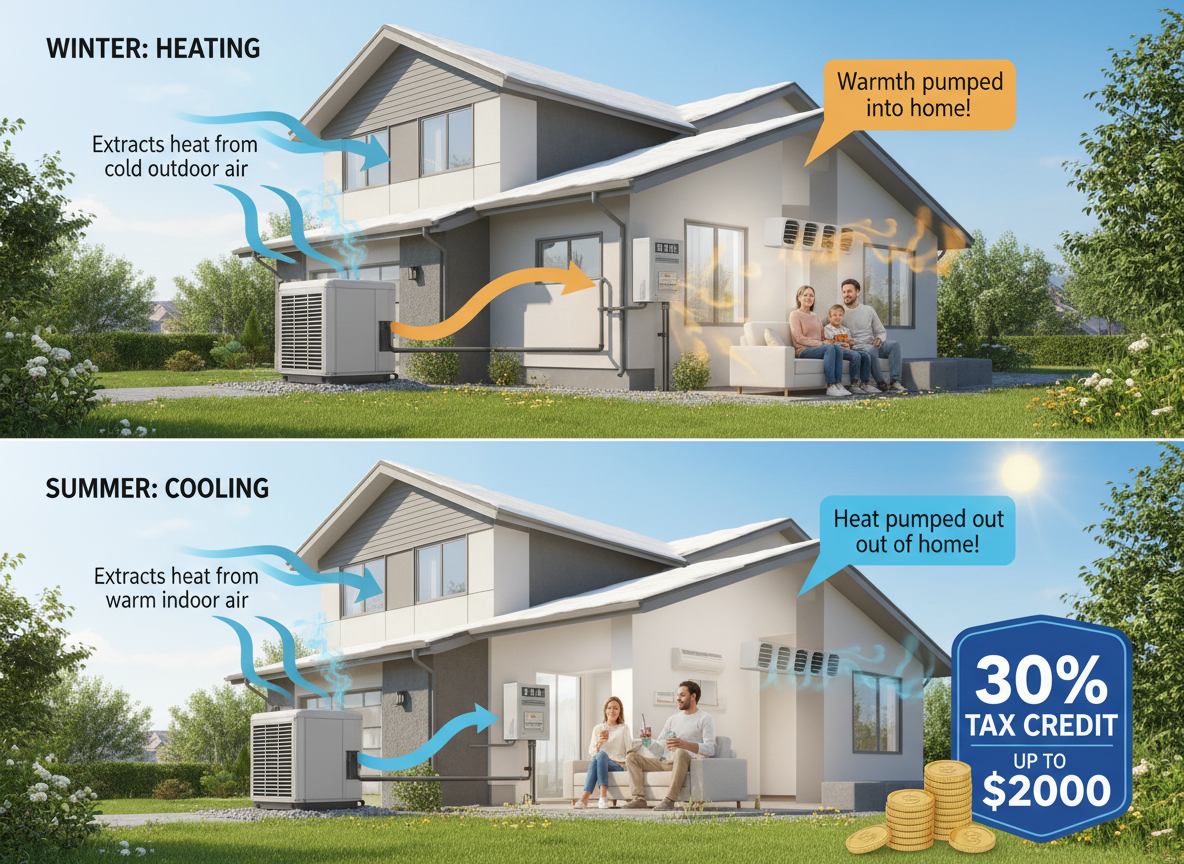
A furnace gas valve is a crucial component of your gas-powered furnace’s fuel system. It is a small box with a switch located inside the furnace cabinet. The primary function of the gas valve is to regulate the flow of natural gas from the supply line into your furnace, ignite the flames and manage temperature based on the signals it receives from the thermostat. Essentially it ensures that the right amount of gas is being delivered for the desired heat. In this article we will discuss what is a furnace gas valve, how it works, the different types and what happens if it malfunctions.
How Does A Gas Valve Work?
There are two valves that make up your furnace’s gas valve that operate by electromagnets. The primary valve, or safety valve, supplies gas to the pilot light. The second valve, or the main valve, allows gas to flow to the burners. The gas valve opens and closes to maintain temperature and allow or restrict gas flow to the pilot light and burners.
The furnace pilot light and thermocouple supply power to operate the safety valve. If the pilot is lit, gas flows past the safety valve through the manifold to the main valve to fuel the burners. If the flame goes out, then the thermocouple tip cools down and shuts off the gas valve. The thermocouple acts as a safety mechanism that prevents gas buildup within the home. The valves are interconnected with other furnace safety controls. If the system detects a malfunction, then the circuit stops and the gas valve closes and shuts down the furnace completely. These safety mechanisms are in place to protect you and your family from dangerous gas leaks.
Types of Furnace Gas Valves
Gas Chain Valve
The gas chain valve consists of a manual valve, gas regulator, solenoid valve, and pilot safety. These types of gas valves have now become obsolete because they were bulky, expensive and subject to leaks from its components. The gas chain valve required the homeowner to manually turn a valve handle to control the flow of the gas to the furnace. The adjustable gas regulator reduced the gas line pressure so the manifold could distribute gas to the burners. The solenoid valve opens when the thermostat calls for heat. Gas will flow to the burners if all the other valves are open. The pilot safety valve stays open if the thermocouple heats to a certain temperature by the pilot flame. It operates by electromagnets or can be overridden manually.
Combination Gas Valve
The combination gas valve replaced the gas chain valve in the 1960s and performs all the same functions in one package. As HVAC technology has progressed, this type of gas valve has also been phased out. Most modern furnaces use electronic ignition controls to operate gas valves.
Faulty Gas Valves Signs and Dangers
If your furnace stops heating, a faulty furnace gas valve could be one of the possible issues. After you have ruled incorrect thermostat settings, power malfunctions, or dirty air filters it could mean a faulty gas valve. Some signs of a faulty gas valve are gas leak, complete furnace shutdown, or flooded furnace. The furnace gas valve is an essential furnace component and if it stops working it could lead to costly furnace repairs and pose dangers and risks to you and your family. A faulty gas valve could lead to gas leaks, CO poisoning, insufficient heating, short cycling, and higher heating bills. Routine furnace maintenance is essential, but it is important to contact a trained and qualified HVAC technician to address furnace issues immediately for furnace repair.
Contact LA Heating and Air
If you suspect your gas valve may be faulty, give us a call today or contact us online to schedule an appointment with one of our technicians to fix the issue. We also offer furnace maintenance plans to fit your needs and budget. We also offer free consultations for furnace replacement. We are here to help you stay warm and cozy this winter.
What is a Furnace Gas Valve Related Posts:






















.png)














